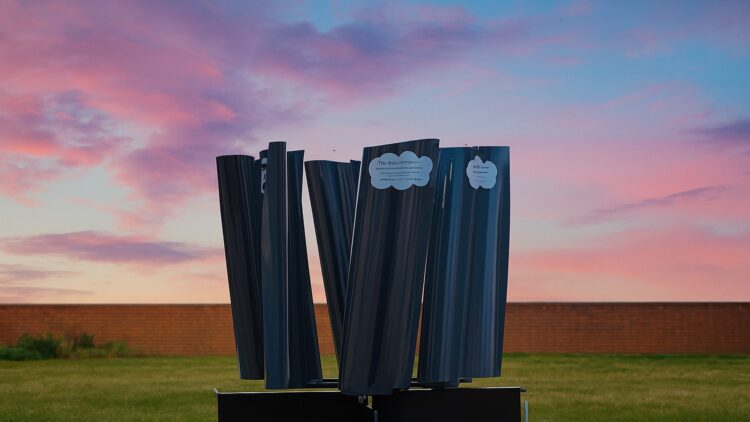Can a device powered by AI that mimics 7 wind turbines spinning at once be making history? Well, the Birmingham Blade spinning right at the top of a Birmingham rooftop is quietly making its way into history books. Created by British tech startup EvoPhase in association with the metal fabricator Kwik Fab, Birmingham Blade is a compact wind turbine powered by artificial intelligence and is geared to function at low wind speeds. Working perfectly for the urban setting, this nifty turbine is said to be far better than other existing turbines working to generate clean energy in a similar setting.
A Birmingham Blade powering a new revolution
With the idea of being able to fit on rooftops, the Birmingham Blade is unlike traditional turbines. While the more dated turbines require wind speeds around 10 meters per second (more or less 22 mph), this turbine by EvoPhase can work well even in wind speeds around 3,6 meters per second, which is slightly over 8 mph. This means the Birmingham Blade can work on rooftops that are surrounded by buildings expanding far beyond the capabilities of the more traditional turbines.
To achieve such a feat, EvoPhase relied on AI. The CTO of EvoPhase, Leonard Nicusan, mentioned that the core focus was to tap into the low wind speed on Birmingham rooftops, which are often surrounded closely by other buildings.
After using AI, EvoPhase was able to test over 2,000 designs, which again is another attractive feat that would have otherwise taken many years and many pounds for other turbines. This newer turbine boasts six curved blades that move around a core vertical axis. Each blade works to capture the lower wind speeds of Birmingham.
AI is overcoming the challenges of traditional turbines
Wind turbines offer us the chance to say goodbye to power bills, and EvoPhase is making an attractive offer by exploring an AI technique known as evolutionary design. Performance is kept in mind by EvoPhase as the AI process entails looking at various designs in relation to performance and opting for the most promising design.
The method employed by EvoPhase is not entirely new and has been used by NASA, Airbus, and GE for ultra-light components. However, EvoPhase is making waves by utilizing these AI principles for wind turbines in an urban setting.
The decision to utilize curved blades is so as to adjust the angle at which energy is captured. Another desirable design feature is the lightweight aluminum build, making this turbine great for rooftops, eliminating issues pertaining to space and noise.
A new direction for wind turbines
Birmingham Blade is well on its way to providing a new direction for wind turbines of the future, and so far, a prototype has been created by Kwik Fab. The prototype defined the precision that was needed for production, as well as looked at the technical considerations that needed to be kept in mind. After improvements, the Birmingham Blade is on par with real-world rooftop testing. It is anticipated that this turbine will be available commercially by later this year.
Being on point for outdoor usage, the Birmingham Blade is set to change how we approach renewable energy in urban environments. This wind turbine will be able to operate constantly and provide a far more consistent source of energy, even during evening times and on days when the wind speed is not ideal.
EvoPhase is not stopping with the Birmingham Blade and is looking to create a novel turbine capable of handling Edinburgh’s strong wind conditions. EvoPhase’s game aims to create wind turbines customized for the climate and wind patterns experienced in each city. Soon, EvoPhase will be rewriting the history of wind turbines and could assist with bidding farewell to solar panels.
Disclaimer: Our coverage of events affecting companies is purely informative and descriptive. Under no circumstances does it seek to promote an opinion or create a trend, nor can it be taken as investment advice or a recommendation of any kind.


